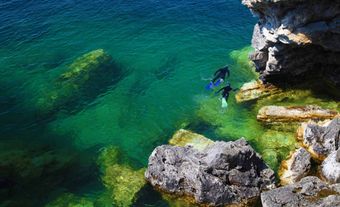Deer Island abuts the border with the US at the entrance to Passamaquoddy Bay on the south coast of New Brunswick. Long in dispute with the US, sovereignty over the island passed to NB in 1817. The name is probably descriptive. Fishing is the most important economic activity. The island is the site of the world's 3 largest lobster pounds, natural inlets converted by fences and nets into corrals where lobsters are held while waiting shipment to market. The 2 largest communities are Fairhaven and Leonardville. Ferry service connects with Letete, NB, and Eastport, Maine.
-
- MLA 8TH EDITION
- Francis, Daniel. "Deer Island". The Canadian Encyclopedia, 17 June 2014, Historica Canada. www.thecanadianencyclopedia.ca/en/article/deer-island. Accessed 23 December 2024.
- Copy
-
- APA 6TH EDITION
- Francis, D. (2014). Deer Island. In The Canadian Encyclopedia. Retrieved from https://www.thecanadianencyclopedia.ca/en/article/deer-island
- Copy
-
- CHICAGO 17TH EDITION
- Francis, Daniel. "Deer Island." The Canadian Encyclopedia. Historica Canada. Article published February 07, 2006; Last Edited June 17, 2014.
- Copy
-
- TURABIAN 8TH EDITION
- The Canadian Encyclopedia, s.v. "Deer Island," by Daniel Francis, Accessed December 23, 2024, https://www.thecanadianencyclopedia.ca/en/article/deer-island
- Copy
Thank you for your submission
Our team will be reviewing your submission
and get back to you with any further questions.
Thanks for contributing to The Canadian Encyclopedia.
CloseArticle
Deer Island
Article by Daniel Francis
Published Online February 7, 2006
Last Edited June 17, 2014
Deer Island abuts the border with the US at the entrance to Passamaquoddy Bay on the south coast of New Brunswick. Long in dispute with the US, sovereignty over the island passed to NB in 1817. The name is probably descriptive. Fishing is the most important economic activity.

 Share on Facebook
Share on Facebook Share on X
Share on X Share by Email
Share by Email Share on Google Classroom
Share on Google Classroom

